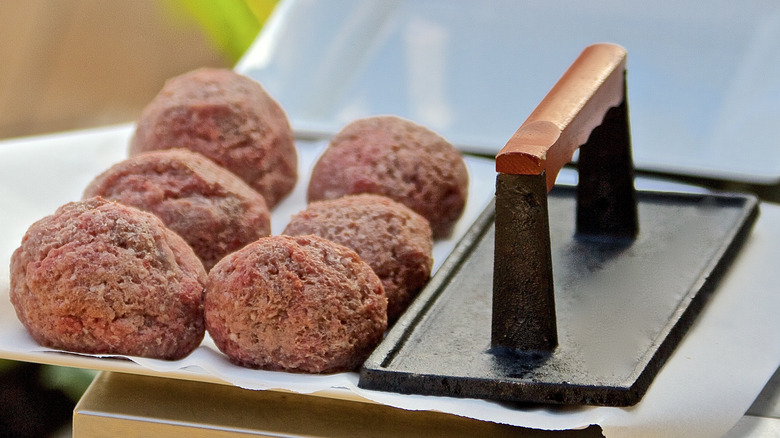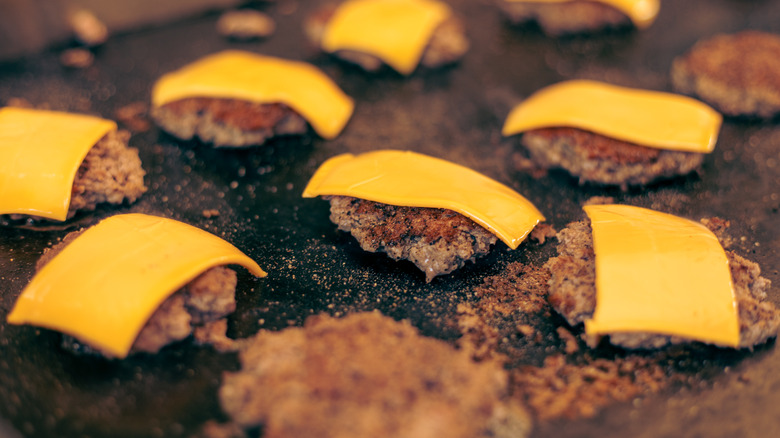You Should Be Using Your Grill Press For More Than Just Burgers
A grill press is not a panini press or a waffle iron; it is simply a weighted plate with a handle. The best model should be large enough that the plate can cover the entire object you want to press. Also, a grill press can be used virtually anywhere you have a hot, open surface. This means it is suitable for an outdoor grill, a flat top, a stove, or a commercial grill. While the primary purpose is to compress protein, such as burgers, you can use this tool for much more.
The first thing to consider when expanding the range of how you use your grill press is the many types of protein that would benefit from a little pressure, which makes cooking faster, helps heat distribute evenly, and extracts moisture. Some options to consider include steak, chicken, and even bacon – but it doesn't stop there.
You can use a grill press on hotdogs, sausages, sandwiches, vegetables, and fruit. Anything you'd like flat and seared, including onion rings, pineapple rings, and cauliflower, are candidates for a grill press. In other words, to explore its versatility, you need to think outside the bun.
How to get the most out of your grill press
The number one thing to understand about a grill press is it forces whatever you're cooking to get closer to the heat. While this can help cook food faster (at least on the outside) and add those appealing sear marks, it does something else: It allows you to cook uneven foods much more evenly. For instance, placing a grill press on broccoli or cauliflower helps flatten it so the entire slice has the best chance of being uniformly cooked. Toss your freshly-grilled cauliflower or broccoli with roasted garlic and grated Parmesan, and serve it as a side dish.
If you use a grill press for sandwiches, then it serves a different purpose: A heated grill press lets you cook both outside surfaces of the bread simultaneously. It also makes it possible, if desired, to toast the exterior of your sandwich quickly without further cooking the inside. Try using a grill press instead of a panini press the next time you want a Cuban sandwich.
Whenever you press a hot surface against your food, it creates a more robust and pronounced flavor. When heat is applied to fruits and vegetables, as well as meat and bread, the chemical reaction — called the Maillard reaction — causes browning, which gives your dish a deliciously sweet overtone from caramelization. A grill press can fast-track this process, so there's no reason to limit it to making smash burgers.

